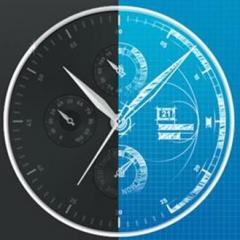Seiko 6139B assembly help please
-
Recently Browsing
- No registered users viewing this page.
-
Topics
-
Posts
-
By RichardHarris123 · Posted
Hello and welcome from Leeds, England. -
By coned do you mean it sits proud of the barrel before you fit the lid?
-
Hi all, Might a posit a theory and people can chime in and tell me if I'm barking up the wrong sycamore: If a mainspring is a bit coned and returned to its barrel for reuse, is it less likely to slip when the spring gets to fully wound? For a bit of background: Slava 2427, barrel walls greased with 8217, six dots evenly spaced around each of the barrel walls, then smeared/ spread along the wall before popping the springs in.
-
By socorrista · Posted
Always in love with watches since I was a kid and with fixing things as I grew up. 10 years ago I bought my first mechanical watch, the Invicta Pro Diver 8926. Recently it started not keeping time at all and when I made an attempt to regulating it I messed up the balance spring. So I decided to go for it and do the following: replace the NH35 movement in it and get the parts to try to fix the original movement. Turns out I should have gone for the balance complete, I just purchased 2 balance wheels. The first one was a disaster, the second one I was able to attach to the stud holder and even install in the watch, but I was definitely doing something wrong as the hairspring got tangled and bent out of place by too much. But by now I know how to install the balance complete. Also decided to change the bezel insert for a green one to freshen it up. But now I'm thinking about either going back to the old danged up insert or keep replacing parts (sapphire glass and another dial, since I lost the "Invicta" letters while cleaning the dial from dust). The invicta has actually sentimental value due to it having seen me go through shit in my life, I'm never going to part from it. I am just debating whether continue freshing it up or putting it back to it's "original" status with all the scars of the old bezel. Parallel to that I made a "build" (watch on the right), putting together a NH34, dial, hands and putting it in a case. It was actually my practice watch for the hand setting. The seconds hand was a terrible nightmare, when I finally got to insert it then the watch wouldn't start. Turns out that the paint job was a bit too thick, shaved a lump with a razor blade and it solved it. Installing the invicta hands on the other movement was a walk in the park in comparison, I'm very happy I practiced with an "aliexpress watch" first. But the thing is that I got it down to around 0.5ms beat error and +6 s/d, so I'll probably gift it to a dear friend as a "tool watch don't baby it at all". Anyhow, cheers to you all! -
By nickelsilver · Posted
What kind of screwplate are you using? The old Martin ones commonly came in B and L variants. The thread pitch is slightly different between the two, and the full thread diameters tend to be a little off from metric nominal, but the B plates are close enough to metric that they work most of the time. The numbering follows (pretty much) the numbering for stems- at least how stems threads are commonly called out. So a "tap 12" would be 0.70mm. (I can only guess the "tap" size for stems comes from these old plates) These old plates tend to cut some and also form the thread by displacing metal. I think in part because they are low-tech, and also generally a bit worn. So it's good to start quite undersize with your initial diameter, and work up to something that gives a full thread form. There are variances plate to plate too, most likely a combination of manufacturing differences and wear. I haven't tried any modern screw plates, I think they are of questionable origin, and even if marked in metric, probably merit some experimentation like the antique ones to find a good starting diameter.
-






Recommended Posts